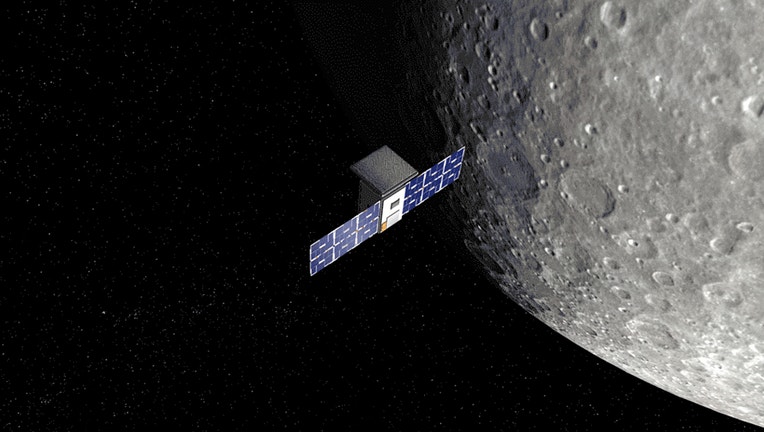NASA moon spacecraft experiencing communication issue, here's what we know

The CAPSTONE mission is planned for launch no earlier than June 2022. Rocket Lab’s Photon satellite bus will deliver CAPSTONE into a trajectory toward the Moon. Credits: Illustration by NASA/Daniel Rutter
A tiny spacecraft recently launched to the moon for NASA is not communicating with Earth after the first part of its journey went well, according to the space agency.
The microwave-sized CAPSTONE spacecraft launched from New Zealand on Rocket Lab's Electron rocket on June 28. The 55-pound spacecraft is operated by Advanced Space for NASA.
On July 4, CAPSTONE separated from Rocket Lab's Lunar Photon upper stage, leaving Earth's orbit and setting it on the path to lunar transfer orbit. However, a day later, the satellite is not communicating via the Deep Space Network.
HOW TO WATCH FOX WEATHER ON TV
NASA uses a series of antennas worldwide to downlink and uplink data with its spacecraft all over the universe, including CAPSTONE. The live data transfers between antenna and spacecraft can be viewed online. By Tuesday morning, CAPS, which stands for CAPSTONE, was not communicating with the antennas in Madrid, Spain or the Goldstone Deep Space Communications Complex in California.
According to Advanced Space, the first 11 hours after separation was normal, and the spacecraft successfully opened its solar arrays and aligned itself to point at Earth for communication.
CAPSTONE communicated with the DSN station in Madrid, Spain and made partial communication with the Goldstone station in California before the signal dropped, according to NASA.
From the initial contacts, Advanced Space teams began commissioning the spacecraft and were able to determine its approximate position and velocity in space.
"Following successful deployment and start of spacecraft commissioning on July 4, the (CAPSTONE) spacecraft experienced communications issues while in contact with the Deep Space Network," a NASA statement read.
The spacecraft team is working to understand the cause of the communication issue and re-establish contact with CAPSTONE. Spacecraft have previously lost communication with the DSN before and were later restored, but every mission is unique, according to NASA.
NASA said there is still time to correct the problem and have a successful mission to the moon.
Due to the issue, the spacecraft team opted to delay the first trajectory maneuver scheduled for Tuesday.
"This maneuver is the first in a series that are designed to make small corrections to increase the accuracy of the transfer orbit to the Moon," Advanced Space wrote in an email. "The spacecraft remains on the overall intended ballistic lunar transfer (BLT) while this targeting maneuver is delayed."
CAPSTONE stands for Cislunar Autonomous Positioning System Technology Operations and Navigation Experiment. The $19.98 million technology demonstration mission was designed to test navigating around the moon in a Near-Rectilinear Halo Orbit. NASA plans to use this same specialized orbit for the Lunar Gateway, where astronauts will stop before heading down to the moon in 2025.
The spacecraft is currently 177,000 miles from Earth as teams work to restore communication with the CubeSat about the size of a microwave.
"The CAPSTONE mission team has been working around the clock and through the holiday weekend to support this important mission," Advanced Space said in a statement. "With CAPSTONE utilizing the BLT, it will take four months to reach the planned Near Rectilinear Halo Orbit (NRHO) around the Moon."
Even with the delayed trajectory correction maneuver, the spacecraft could still arrive in its lunar orbit by mid-November.

